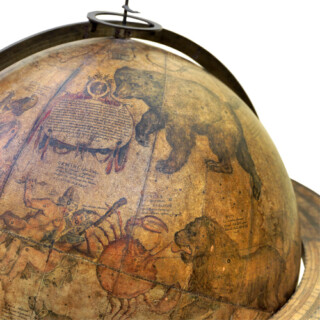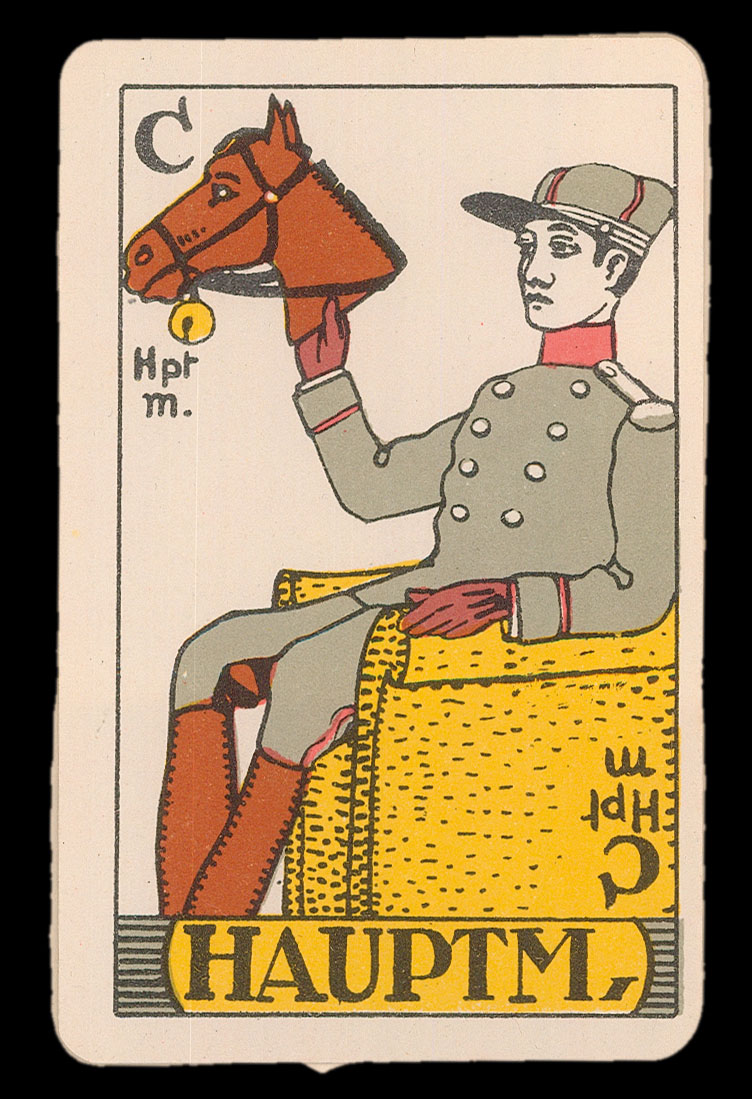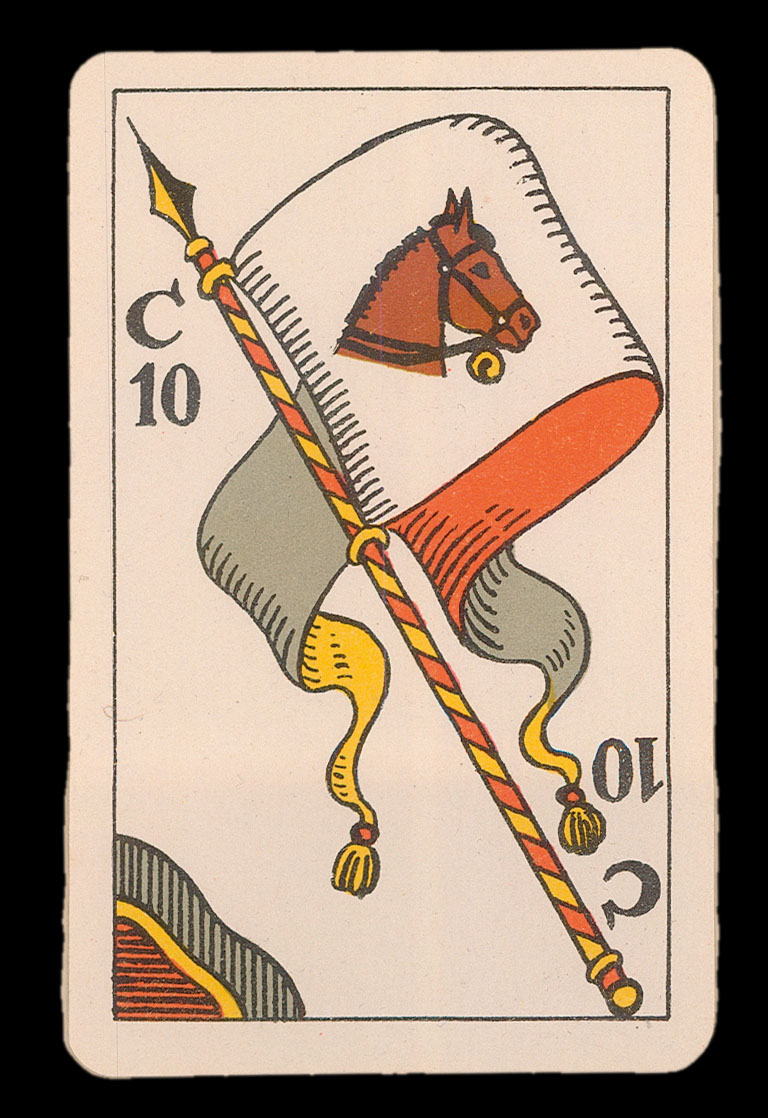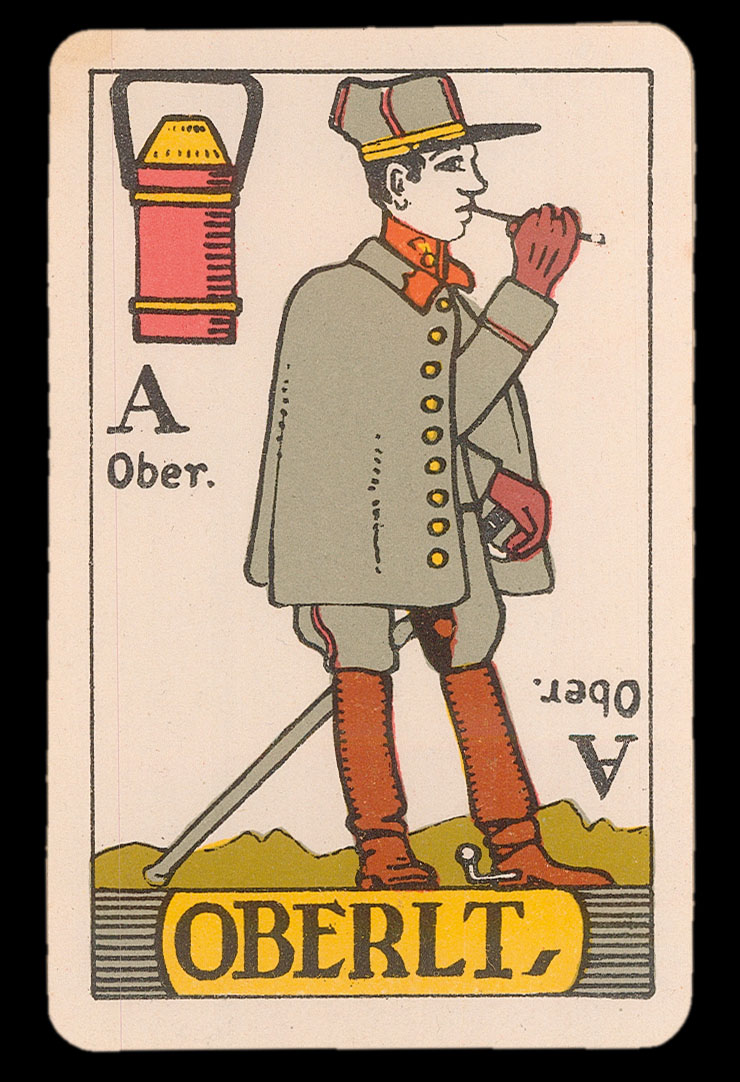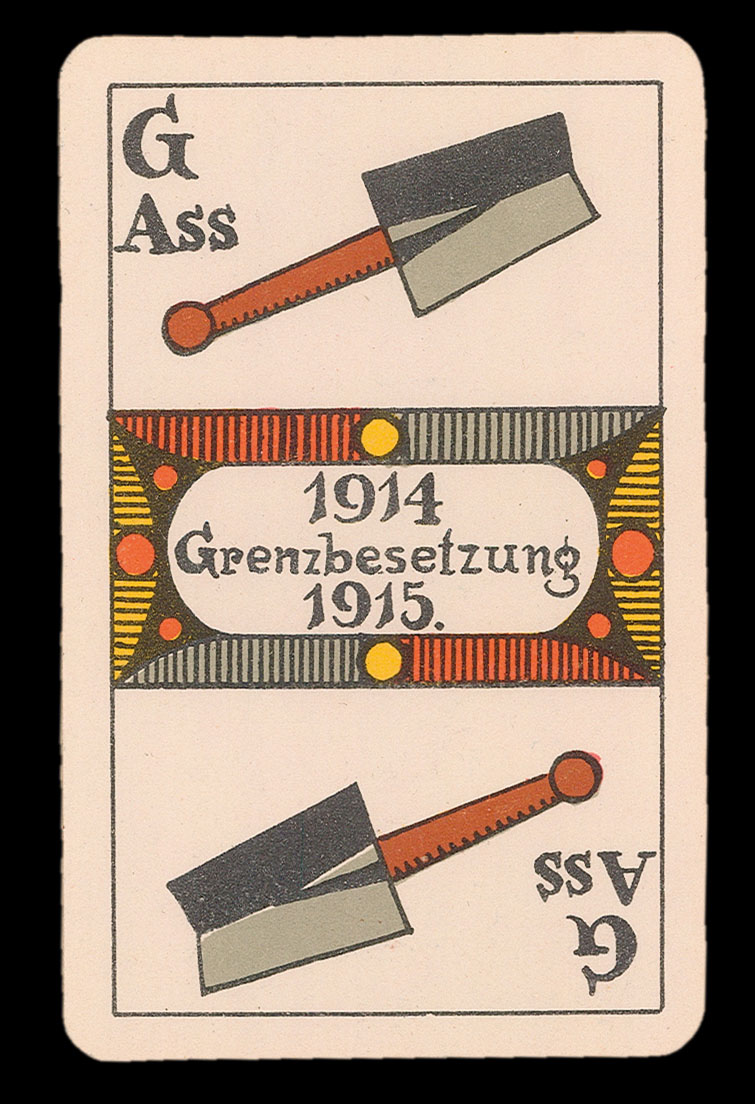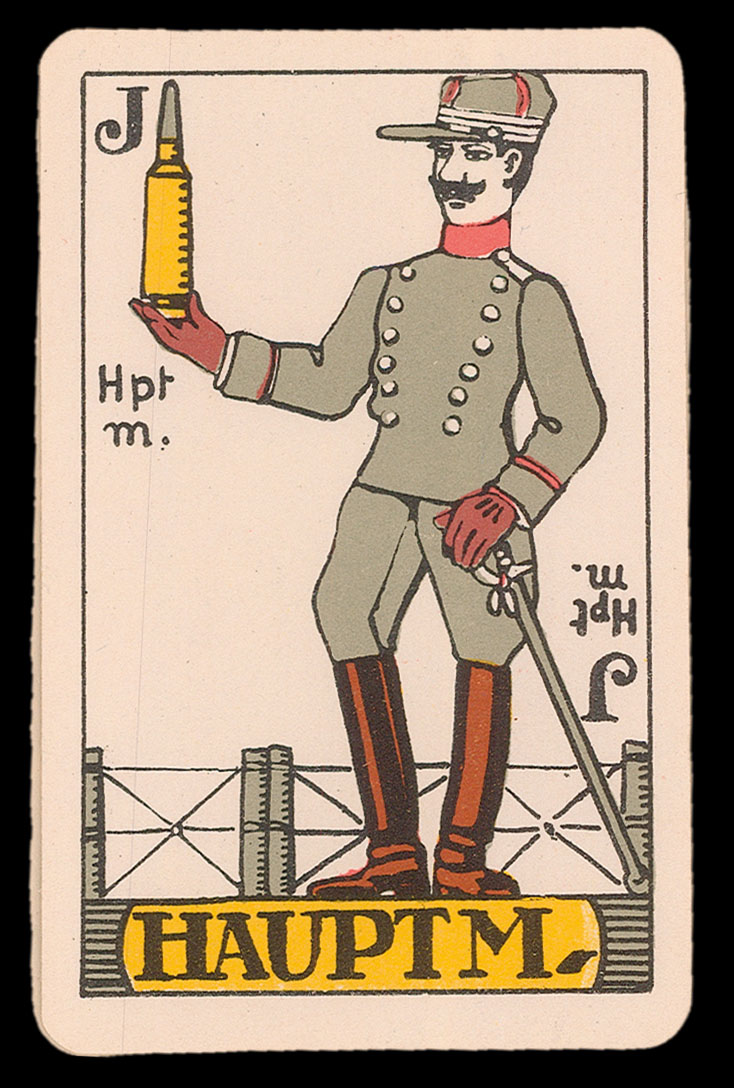Play that Funke card game
Jass-Karten
E. FUNKE & CO.
St. Gallen,
E. Funke & Co.,
1915
36 chromolithograph playing cards with blue diagonal design to versos, in original paper wrapper.
90 by 55mm (3.5 by 2.25 inches).
21525
To scale:
notes:
notes:
The Maker
Being active in the 1910s, Swiss publishers E. Funke & Co. produced a number of military-themed decks of cards during the First World War, including the present Jass deck and another Soldatenkartenspiel ('Soldier Card Game').
The Cards
Known as the national card game of Switzerland, Jass is a trick-taking card games played by two pairs. With 70 variants, the rules can vary, but is always played with a deck of 36 cards, lacking the ...
Being active in the 1910s, Swiss publishers E. Funke & Co. produced a number of military-themed decks of cards during the First World War, including the present Jass deck and another Soldatenkartenspiel ('Soldier Card Game').
The Cards
Known as the national card game of Switzerland, Jass is a trick-taking card games played by two pairs. With 70 variants, the rules can vary, but is always played with a deck of 36 cards, lacking the ...
The Maker
Being active in the 1910s, Swiss publishers E. Funke & Co. produced a number of military-themed decks of cards during the First World War, including the present Jass deck and another Soldatenkartenspiel ('Soldier Card Game').
The Cards
Known as the national card game of Switzerland, Jass is a trick-taking card games played by two pairs. With 70 variants, the rules can vary, but is always played with a deck of 36 cards, lacking the Two, Three, Four and Five cards found in a 52-card deck. While it is generally played with Swiss-German, Austria or French suits, some decks were made with more unusual suits, as here, with the cards divided into Bullets, Grenades, Horses and Shovels.
These striking suits revolve around the military theme of this deck, in which the court cards depict the Hauptmann (captain), Korporal (corporal) and Oberleutnant (first lieutenant) in the place of the typical royal figures. The inscription of "Grenzbesetzung 1914/1915" (Border occupation 1914/1915) on the Ace of Shovels demonstrates that these cards were made to depict the Swiss army presence along the northwest border of the court during the early years of the First World War. Stationed in a staggered defensive position facing the Franco-German front, the troops were deployed in case of attempts to move the war south into Switzerland. The soldiers no doubt had plenty of time for Jass.
Being active in the 1910s, Swiss publishers E. Funke & Co. produced a number of military-themed decks of cards during the First World War, including the present Jass deck and another Soldatenkartenspiel ('Soldier Card Game').
The Cards
Known as the national card game of Switzerland, Jass is a trick-taking card games played by two pairs. With 70 variants, the rules can vary, but is always played with a deck of 36 cards, lacking the Two, Three, Four and Five cards found in a 52-card deck. While it is generally played with Swiss-German, Austria or French suits, some decks were made with more unusual suits, as here, with the cards divided into Bullets, Grenades, Horses and Shovels.
These striking suits revolve around the military theme of this deck, in which the court cards depict the Hauptmann (captain), Korporal (corporal) and Oberleutnant (first lieutenant) in the place of the typical royal figures. The inscription of "Grenzbesetzung 1914/1915" (Border occupation 1914/1915) on the Ace of Shovels demonstrates that these cards were made to depict the Swiss army presence along the northwest border of the court during the early years of the First World War. Stationed in a staggered defensive position facing the Franco-German front, the troops were deployed in case of attempts to move the war south into Switzerland. The soldiers no doubt had plenty of time for Jass.
bibliography:
bibliography:
provenance:
provenance:






